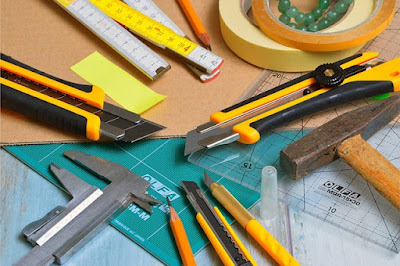How to Build a Fully Functional Woodworking Shop
🔧Think You Need a Big Garage to Start Woodworking? Think Again.
If you’ve been putting off woodworking because you don’t have a huge garage or basement, you’re not alone. Space is the number one reason many aspiring woodworkers delay getting started.
But here’s the good news: you don’t need a massive workshop to build amazing things. With the right setup, you can create a fully functional woodworking shop in a space as small as 10’ x 6’ — even in a corner of your garage, shed, or spare room.
In this guide, we’ll show you how to plan, design, and equip your small woodworking shop for maximum efficiency on a minimal footprint.This post contains affiliate links. We may earn a small commission at no extra cost to you.
🪚 Step 1: Choose the Right Location for Your Compact Workshop
Not every space is ideal for woodworking, but many can be transformed with a little creativity.
Great small shop locations include:
-
A corner of your garage
-
An outdoor shed or garden building
-
A basement or utility room
-
An enclosed patio or sunroom
Make sure your space has:
-
Adequate ventilation
-
Basic electrical access
-
Enough room to move between tools safely (a 3’ x 3’ walking space is ideal)
🧰 Step 2: Select Only the Essential Tools
In a small woodworking shop, every square foot matters — so don’t waste space (or money) on unnecessary tools.
Must-have tools for small workshops:
-
Compact table saw or track saw
-
Cordless drill/driver
-
Orbital sander
-
Jigsaw or circular saw
-
Bench or wall-mounted vise
-
Clamps (lots of them)
Tip: Choose tools that fold, stack, or wall-mount to save space.
✅ Pro Tip: Use a tool selection guide like the Ultimate Small Shop Plan to avoid overbuying or getting the wrong models.
📐 Step 3: Plan a Smart Layout for Maximum Efficiency
A good layout reduces clutter, minimizes movement, and improves your workflow. Even small spaces can be organized into functional zones:
Small Shop Zones to Include:
-
Cutting area – table or track saw setup
-
Assembly zone – fold-out workbench or table
-
Tool storage – wall-mounted pegboards, cabinets, or rolling carts
-
Dust control corner – compact shop vac or DIY dust system
Bonus: Build multi-purpose stations — like a workbench that doubles as a tool stand.
🧹 Step 4: Solve the Dust and Noise Problem
Small shops fill with dust fast. Plus, if you're working indoors or near others, noise can be a problem.
Dust control tips:
-
Use a shop vac connected to your tools
-
Install a portable air filtration unit
-
Consider a dust separator or cyclone bucket for cleanup
Noise control tips:
-
Line walls with foam or insulation board
-
Choose quieter tool models (brushless motors)
-
Work during daylight hours to minimize complaints
💡 Step 5: Add Lighting, Safety, and Comfort Features
Good lighting is essential in small spaces. Combine overhead lighting with LED strips or task lights over your workbench.
Also consider:
-
Rubber floor mats to reduce fatigue
-
Fire extinguisher and first-aid kit
-
Hearing and eye protection easily accessible
📘 Bonus: Use Ready-Made Plans to Simplify Your Build
If you're just starting out, designing your shop from scratch can be overwhelming. That’s why many DIYers turn to a pre-made guide that walks them through every detail — from tool selection to shop layout, wiring, soundproofing, and even safety setup.
One of the most popular and trusted is the:
✅ Ultimate Small Shop Guide – A 246-page resource packed with illustrations, layout diagrams, tool hacks, and insider tricks to build a professional workshop in ANY small space — on a budget. get instant access to the guide.
📌 Final Thoughts: Your Dream Shop is Closer Than You Think
You don’t need a huge garage. You don’t need $10,000 in tools. You just need a plan, a small space, and the right guidance.
Start with the basics. Stay organized. Build smart.
Soon, you’ll be creating beautiful projects from your own efficient, compact woodworking shop — no matter how small your space is.
✅ Frequently Asked Questions
Q: What is the minimum space needed for a woodworking shop?
A: Many small woodworking shops operate efficiently in as little as 10’ x 6’, especially with smart tool layout and wall storage.
Q: How much does it cost to build a basic workshop?
A: With proper planning, you can set up a complete workshop for under $1,000, especially using budget tool sourcing strategies.
Q: Can I do woodworking in an apartment or shed?
A: Yes! Many compact tools are quiet and clean enough for shed setups, basements, and even spare rooms with the right dust and noise controls.
Q: Where can I get woodworking plans for small spaces?
A: The Ultimate Small Shop Guide includes not only workshop setup plans but also project plans optimized for small shop workflows.







.jpeg)

.jpeg)
